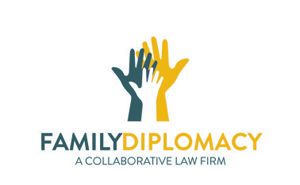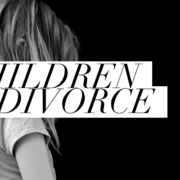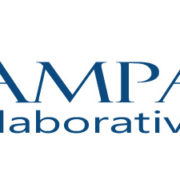Mediation Compared to Collaborative Divorce
There has been a growing recognition over the past few decades that courtroom divorce, an adversarial process that pits husband against wife, is a dreadful and harmful method to resolve family disputes. As a result, the Florida Supreme Court, like many other judicial bodies, declared that family matters needed “a system that provided nonadversarial alternatives and flexibility of alternatives; a system that preserved rather than destroyed family relationships;…and a system that facilitated the process chosen by the parties.” In re Report of the Family Law Steering Committee, 794 So. 2d 518, 523 (Fla. 2001).
Two alternatives that have developed to fill this space are mediation and collaborative divorce. As collaborative divorce is a relatively new option, and there exists much confusion – even among experienced family law practitioners – about the differences between these two methods of dispute resolution, this article looks to compare and contrast mediation and collaborative divorce.
Event versus Process
Mediation is generally a one-time meeting where the parties come together, along with a mediator, to attempt to settle disputes. In Florida, the parties’ attorneys are also in the room, though other jurisdictions exclude attorneys. The mediator is a neutral actor who does not have the power to force the parties into any type of settlement, but can only encourage them to reach an agreement. A mediation conference will generally last from 3 to 8 hours or more. If the parties cannot reach an agreement in that meeting, then they tend to go to court, usually multiple times.
Collaborative Divorce is similar to mediation in that the clients, their respective attorneys, and a neutral facilitator (and, if there are extensive assets and debts, a neutral financial professional) meet to settle disputes. However, collaborative divorce practitioners understand that the best outcome for their clients does not usually materialize during a long, drawn out meeting at a time when the clients’ emotional vulnerabilities are at their peak and decision-making abilities are at their lowest. Think of an experience purchasing a car, where a person is likely to spend hours haggling over the price, the features, the warranty, the interest on the loan; finally, exhausted after a full day of back-and-forth with the car salesman and possibly not thinking straight, an agreement is made which may or may not address actual needs.
Collaborative divorce takes a different tact. Unlike the one-day mediation “event,” collaborative divorce is a process. It is a series of relatively short (usually about 2-3 hour, at most) meetings where the clients understand that they are unlikely to come to a full agreement at the first meeting. And, rather than go to court if they are unable to reach an agreement at a meeting, the clients and professionals know that they will discuss the matter at a future meeting and give themselves time to develop options. In this way, unlike mediation, the inability to reach agreement on a certain issue is not seen as a failure, with the emotional response of rejection then being manifested in the form of heated court proceedings; rather, it is an opportunity to put the time and effort into finding a solution that best takes into account the needs of both parties.
Litigation Threats versus “Magic Moments”
As mentioned above, if mediation fails, the parties and their attorneys will proceed to court. This produces a phenomenon where the attorneys, throughout a mediation conference, will trump up the superiority of their position and address what their client is “likely” to achieve if a judge were to decide an issue. And then, of course, come the inevitable threats to walk out of mediation and engage in a court battle.
In collaborative divorce, the attorneys are retained solely for the purpose of bringing the clients to an agreement and to an uncontested final hearing, and they are contractually barred from appearing in court for contested matters. This means that, in the unlikely event that the clients are ultimately unable to resolve all of their issues, the attorneys have failed and must be fired by their clients. Accordingly, at times collaborative professionals discuss possible outcomes if the case were to go to court, but the attorneys also address what is unlikely to happen if a judge were to decide, such as a solution that meets both clients’ and their children’s needs.
During those times where there is an apparent impasse on an issue, rather than threaten litigation, collaborative professionals usually urge clients to take a moment of silence and contemplate creative solutions that address both parties’ concerns. This often triggers what author and internationally-renowned attorney Pauline Tesler refers to as a “magic moment,” an epiphany and workable solution brought about by a combination of the clients’ desire to settle amicably yet address their interests and a realization that their attorneys will be disqualified if they cannot reach an agreement. See Tesler, Collaborative Law: Achieving Effective Resolution in Divorce without Litigation (2008).
Confidence versus Security
Florida, like most jurisdictions, has a rule that all discussions that take place during mediation are confidential and cannot be brought up directly in any subsequent appearance in court unless the parties otherwise agree. However, attorneys in mediation are listening closely to the opposing party and opposing counsel to see whether there are issues that can later be brought to court via other means, such as a parenting mistake that may be addressed in deposition or the mention of a diary which may be the subject of a request for production.
Discussions that take place in a collaborative divorce meeting are also confidential. However, because the collaborative attorneys will not bring contested issues to court, their focus is on finding solutions rather than using the meetings as a tool of opposition research. This permits the clients a secure space to explore options that they might otherwise not have considered for fear that they would have disclosed information that could be used against them.
Free-for-All versus Structure
In mediation, both parties usually have a number of issues that they wish to address, but there is generally no roadmap which describes how or when to address them. Accordingly, the attorneys and parties are oftentimes jockeying to get their issues addressed, which can lead to important concerns being forgotten or otherwise left untackled.
In contrast, all collaborative divorce meetings have a written agenda. This agenda is discussed and drafted beforehand by the collaborative professionals with the input of the clients to ensure that important issues are addressed in an order which is likely to bring about resolution to the next issue. For example, issues in which there is general agreement, such as who receives each car or pension plan, may be listed on an agenda before more difficult issues, such as disposition of a house. This allows a sense of accomplishment and good will, and thus more likelihood of success, leading into discussion of the difficult issues.
End versus Beginning
Mediation generally has one purpose: bring the parties to an agreement so that they can end their marriage.
Collaborative divorce, on the other hand, has multiple purposes. One of the most important purposes is teaching the clients, via the neutral facilitator (who is usually a licensed mental health professional), how to constructively communicate and respectfully resolve conflicts. In this way, collaborative divorce marks not just the end of the marriage but also the beginning of the clients’ new relationship as effective, civilized former spouses and/or co-parents.
—
Adam B. Cordover is managing attorney of Family Diplomacy: A Collaborative Law Firm where he practices exclusively in out-of-court dispute resolution. He is also former president of Next Generation Divorce, growing it to become one of the nation’s largest interdisciplinary collaborative practice groups, and Co-Chair of the Research Committee of the International Academy of Collaborative Professionals. Adam can be reached at (813) 443-0615 or via www.FamilyDiplomacy.com.





